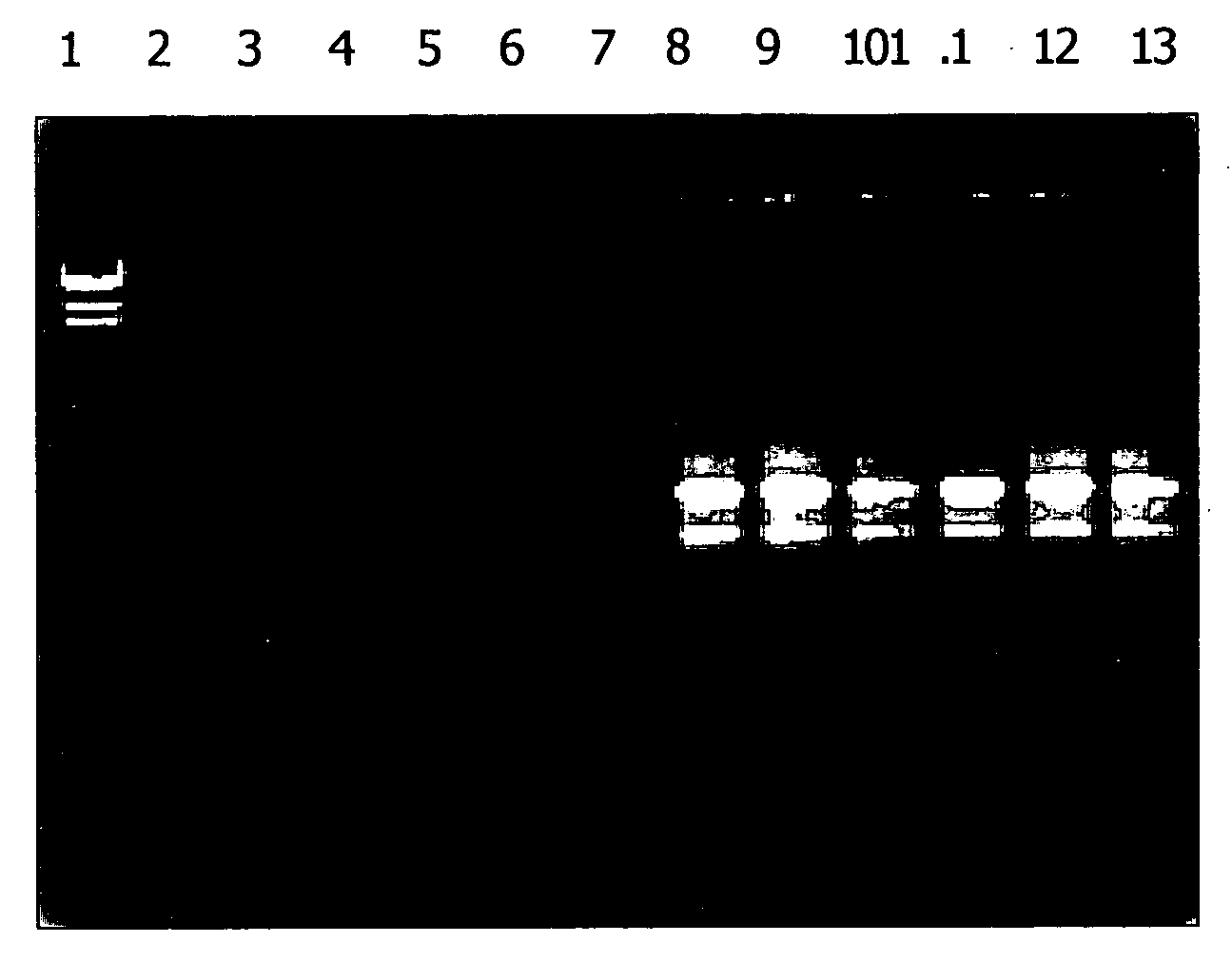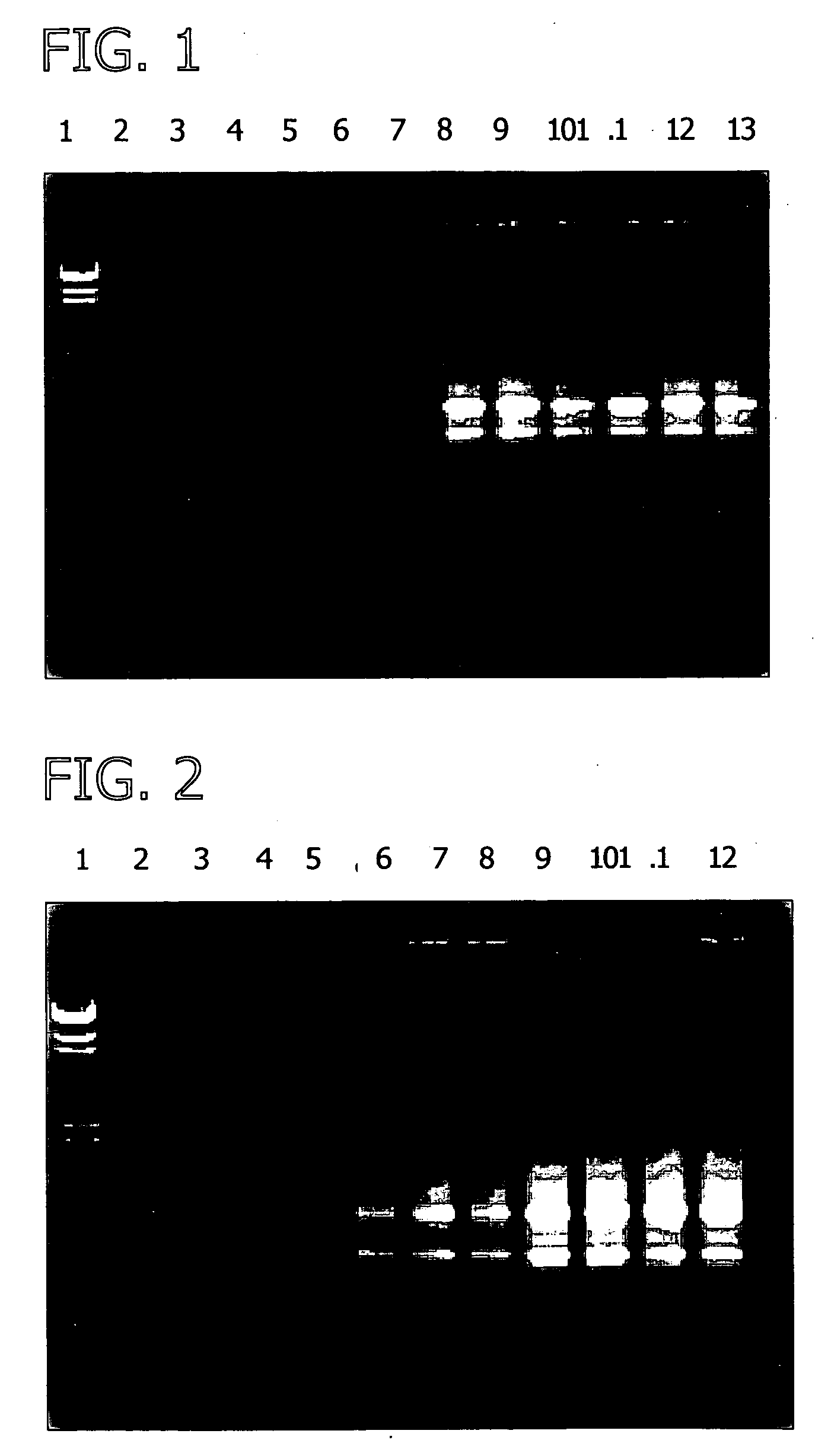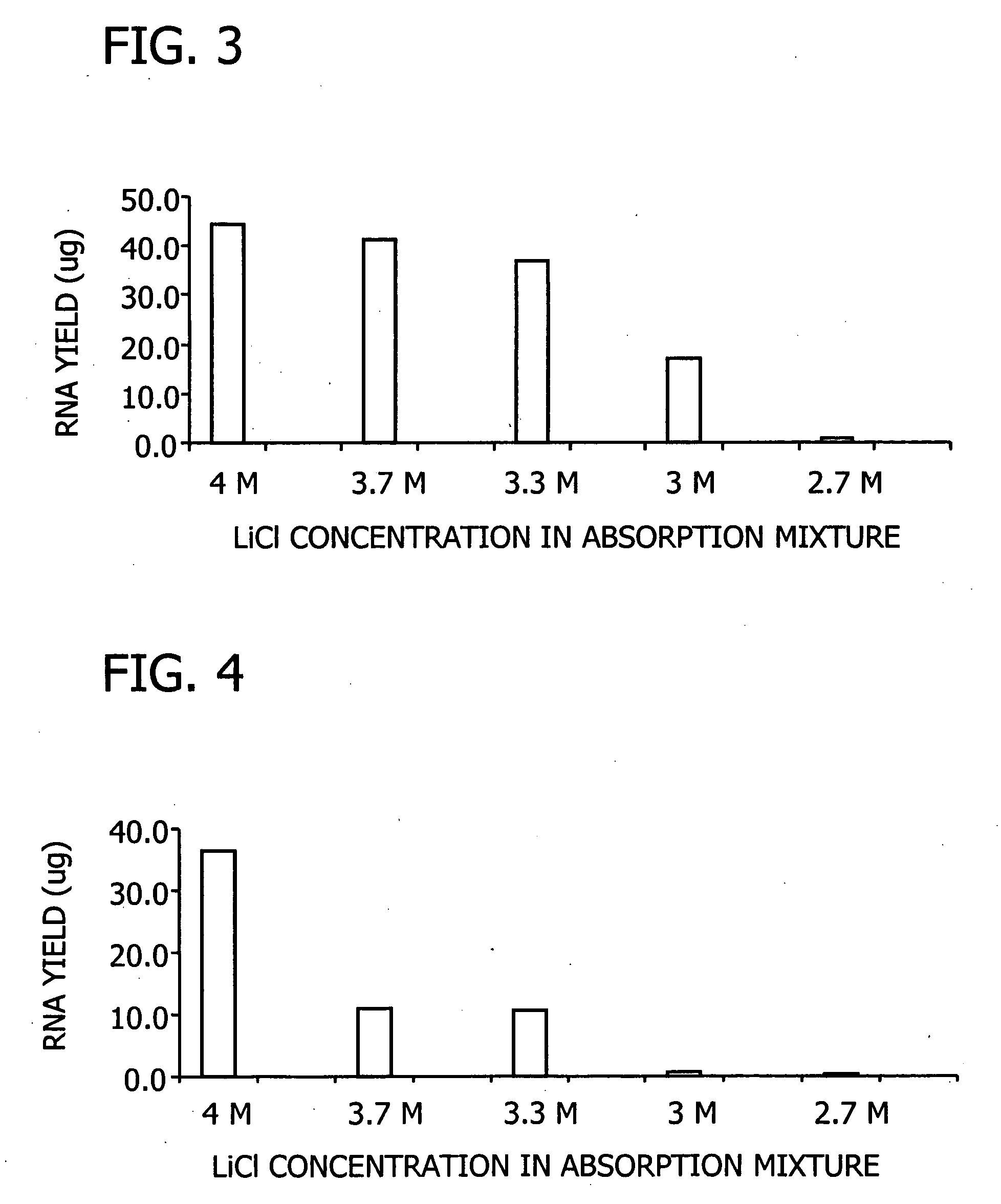Method for the isolation of RNA from biological sources
a biological source and purification technology, applied in the field of purification of rna, can solve the problems of affecting the isolation of rna, degrading rna, and impairing rna purification, and achieve the effect of high levels of phenolic compounds
- Summary
- Abstract
- Description
- Claims
- Application Information
AI Technical Summary
Benefits of technology
Problems solved by technology
Method used
Image
Examples
example 1
RNA Purification from Norway Spruce and Pine Needles
[0078] RNA Purification from Norway Spruce and Pine Needles with and without Detergents
[0079] Norway Spruce and pine needles were harvested and ground to a fine powder in liquid nitrogen. For each RNA extraction, 100 mg of the powdered plant material was lysed at 56° C. for 3 minutes in 450 μl of one of the three lysis solutions: 1) 6 M guanidine hydrochloride, 50 mM Tris-HCl, 95 mM EDTA, 1% 2-mercaptoethanol, pH 7.8; 2) 6 M guanidine hydrochloride, 50 mM Tris-HCl, 95 mM EDTA, 1% 2-mercaptoethanol, 1% Igepal CA-630, pH 7.8; 3) 6 M guanidine hydrochloride, 50 mM Tris-HCl, 95 mM EDTA, 1% 2-mercaptoethanol, 1% Tween 20, pH 7.8. The extract was filtered through a filtration column (Sigma Product Number C9346) by centrifugation for 2 minutes at 16,000×g to remove cellular debris. The clarified extract was mixed with a half volume of a 12 M LiCl binding solution, and the mixture was forced through a silica binding column by centrifugat...
example 2
Performance of Detergents in RNA Purification from Difficult Plant Tissues
[0100] Various detergents were evaluated for RNA extraction from pine needles and grape leaves. Plant tissue was ground to a fine powder in liquid nitrogen. For each test, 100 mg of powdered plant material was lysed at 56° C. for 3 minutes in 500 μl of a lysis solution comprising 6 M guanidine hydrochloride, 50 mM Tris-HCl, 90 mM EDTA, 1% 2-mercaptoethanol, pH 7.5, and 1.5% of one of the detergents listed in Table 1. Bulk cellular debris was removed by centrifugation for 3 minutes at 16,000×g. The supernatant extract was filtered through a filtration column (Sigma Number C6866) by centrifugation for 1 minute at 16,000×g to remove residual cellular debris. The clarified extract was then mixed with 250 μl of a 12 M LiCl binding solution. The mixture was forced through a binding column (Sigma product C6991) by centrifugation for 1 minute at 16,000×g. The column was washed once with 500 μL of a 2 M LiCl solution ...
example 3
Effects of LiCl Concentration on RNA Binding from Plant Tissue Extract to Silica Matrix
[0102] Pine needles and corn leaves were each ground to a fine powder in liquid nitrogen. For each assay, 100 mg of powdered plant material was lysed at 56° C. for 3 minutes in 500 μl of a lysis solution containing 6 M guanidine hydrochloride, 50 mM Tris-HCl, 95 mM EDTA, 1% Tween 20, 1% 2-mercaptoethanol, pH 7.8. Bulk cellular debris was removed by centrifugation for 3 minutes at 16,000×g. The supernatant extract was filtered through a filtration column (Sigma Number C6866) by centrifugation for 1 minute at 16,000×g to remove residual cellular debris. The clarified extract was mixed with a half volume of one of the five binding solutions comprising 8, 9, 10, 11, and 12 M LiCl, respectively. The combinations resulted in a series of LiCl concentrations ranging from 2.7 and 4 M in the binding mixture. RNA binding, washing, and elution were carried out as described in Example 2. Purified RNA was anal...
PUM
| Property | Measurement | Unit |
|---|---|---|
| pH | aaaaa | aaaaa |
| pH | aaaaa | aaaaa |
| pH | aaaaa | aaaaa |
Abstract
Description
Claims
Application Information
 Login to View More
Login to View More - R&D
- Intellectual Property
- Life Sciences
- Materials
- Tech Scout
- Unparalleled Data Quality
- Higher Quality Content
- 60% Fewer Hallucinations
Browse by: Latest US Patents, China's latest patents, Technical Efficacy Thesaurus, Application Domain, Technology Topic, Popular Technical Reports.
© 2025 PatSnap. All rights reserved.Legal|Privacy policy|Modern Slavery Act Transparency Statement|Sitemap|About US| Contact US: help@patsnap.com



